Last week, I told you about my battle with an invasive weed known by many names: bishop’s weed, goutweed, ground elder, and Snow on the Mt., among others. SEE HERE. Originally imported into the country as a decorative ground cover, it comes in two variations: green and variegated cream and green.
You can find both plants in some garden centers; I contaminated my front lamppost garden by planting a flower from the garden center, which had a hitchhiker within the plant’s roots. Considered invasive by some, the plant is outlawed in some New England states, such as Maine. SEE HERE
My back garden is my favorite garden. I sit on the patio and watch the golfers on the fairway before me. I have three or more bird feeders in a few locations in the garden, and I enjoy watching the birds.
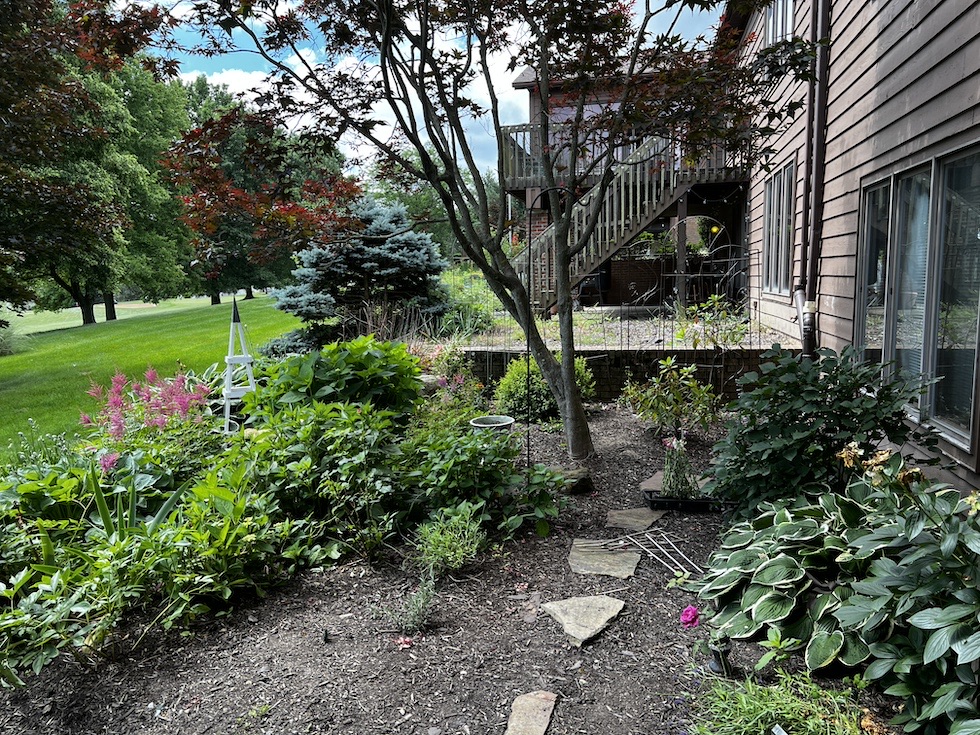
We have horrible hard clay soil, which I amend yearly with peat moss and mulch. Last winter, I applied a layer of cow manure compost, and my garden is revived this spring. So you can imagine my dismay when I noticed the green and cream devil on the outer edge of my garden.
See below the little stalk of bishops weed at the left of the rocks, infra of the grass stalks. That little bit is all that is required to contaminate the entire garden within a year.
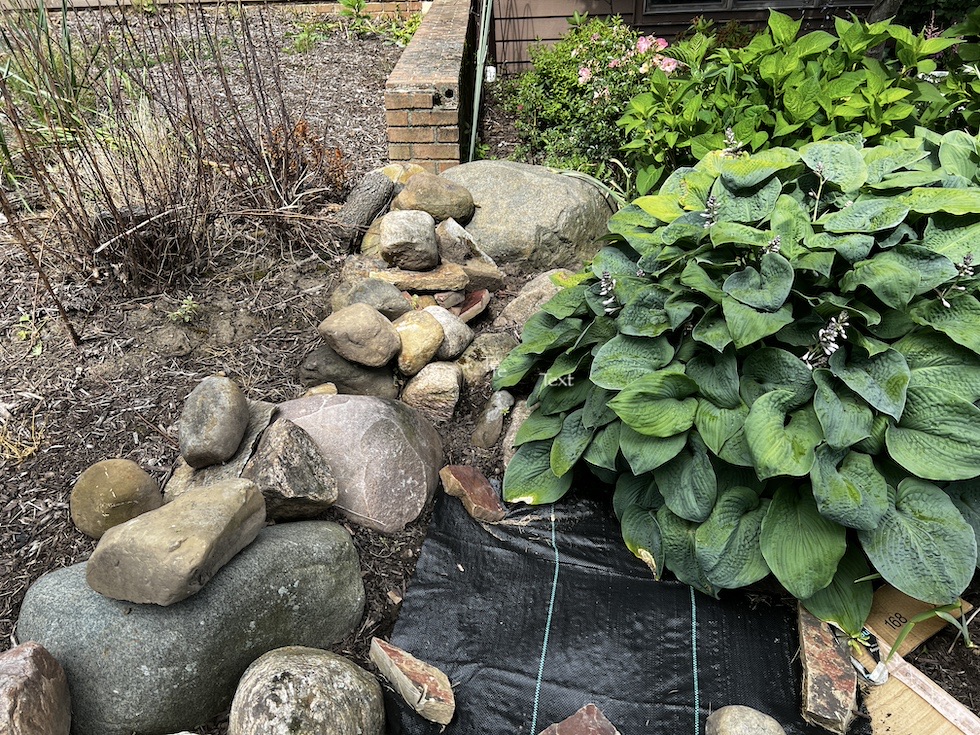
The far corner of the garden adjoins my neighbor’s garden, which contains some bishop’s weed. The present owner has attempted to eliminate the weed. Not a garden person, three years ago, she had all the plants removed from her garden space and the area sprayed with an herbicide. Unfortunately, some persistent weeds, including knotweed, returned in some areas. When I found them this spring, the knotweed had grown into and within my cornflowers at the front edge of the garden. Once the weed gets its root runners in a plant, it becomes contaminated. The weed will eventually take over and kill the plant. Knowing the cornflower was a goner, I removed the entire plant.
I cannot remove this entire garden down three feet and replace the soil; it is too large and has many established plantings. So, I did something I never thought I would ever do.
Desperate to save the garden, I returned to the computer and researched what to do. I found advice from professional garden centers, Maine agriculture, homeowners, and gardeners. I also found that many home gardeners were searching for answers.
Some recommend just pulling it up—we all know that will not eradicate it. This weed spreads by sending out shoots and seeds from the flowers in the spring. It does spread fast and covers a large, dense mat-like area. Others did what I did in the front lamp post garden: remove all plants and soil down three feet. Some further advised converting to grass and mowing it weekly to prevent any strays from taking off. Others covered it for one year and planted new plants the following season.
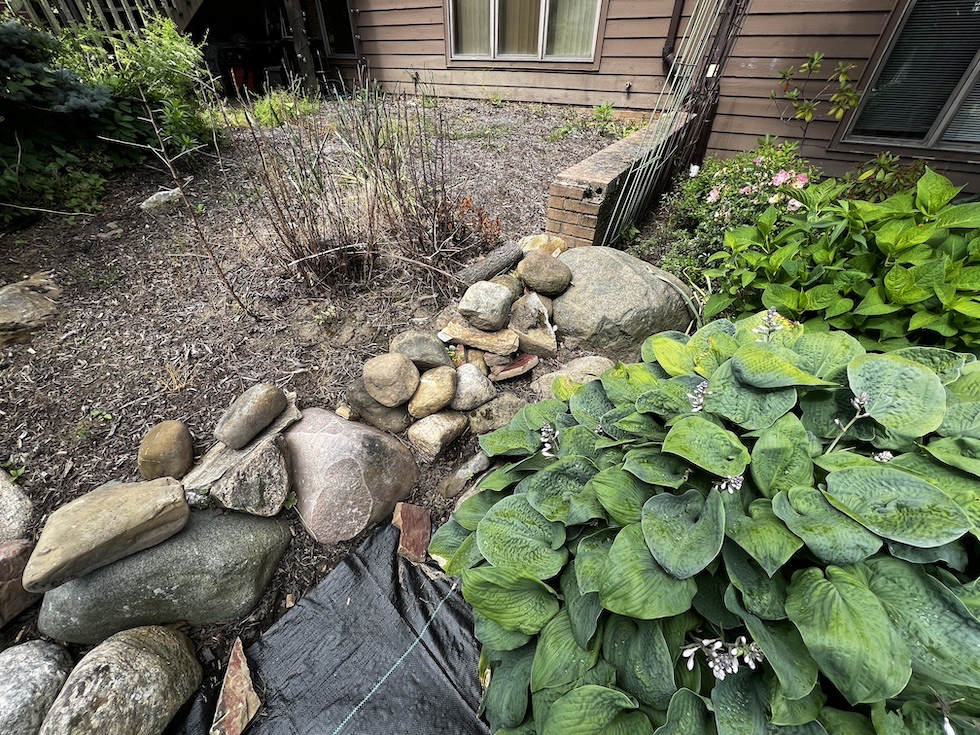
After doing some reading, I decided to follow a blogger’s suggestions. She incorporated most of the eradication methods I had researched. In this corner of the garden, the goutweed had grown into my cornflower. So, I removed the plants, sprayed Roundup into the hole, and then covered the area with black weed fabric and cardboard. The blogger is named Miss Mustard Seed, who has the same problem in her new house. See Here... I read her posts and noticed she was using a method also recommended online.
She covers the plants with cardboard, a heavy layer of mulch in some areas. She also is using a process I found called solarization, where you overheat and cook the sucker dead. You place the black plastic on the weed and tack it down. Heat builds up and destroys the plant.
She admitted that in some places where the plant is the thickest, she applied Roundup, the only herbicide known to kill this type of weed. Unfortunately, it can require multiple applications. After applying the Roundup, she covered the area in cardboard and plastic. Now, she carefully checks the area weekly; if she sees any goutweed leaves coming out of the tarped area, she pulls the leaves out immediately.
Covering and watching to pull is the best natural method if you cannot remove the entire plant and soil down 2.5 to 3 feet. Sadly, it requires a few years of diligence.–Follow up and pull or recover with plastic at the first sign of regrowth.
My neighbor’s goutweed enters my garden through the boulder wall at the garden’s edge. I can’t get at the plant there, so I did something I swore I would never do—I purchased Roundup Ivy Killer and sprayed the rocks. I also sprayed the hole where I removed the cornflower. I then covered it with a black weed carpet and cardboard.
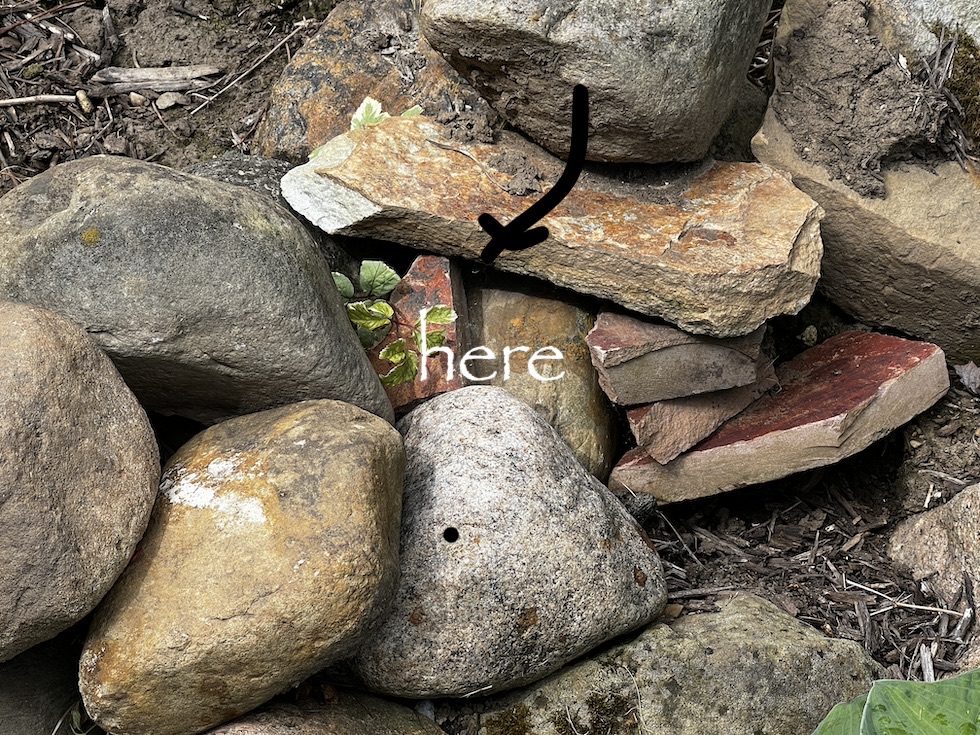
Yesterday, I went out to check the area and found goutweed growing out from under the edge of the cardboard. So, now I will get a roll of black plastic and cover everything to try and burn it out. I’ll respray the rocks and continue to watch and pull any small leaves if they appear.
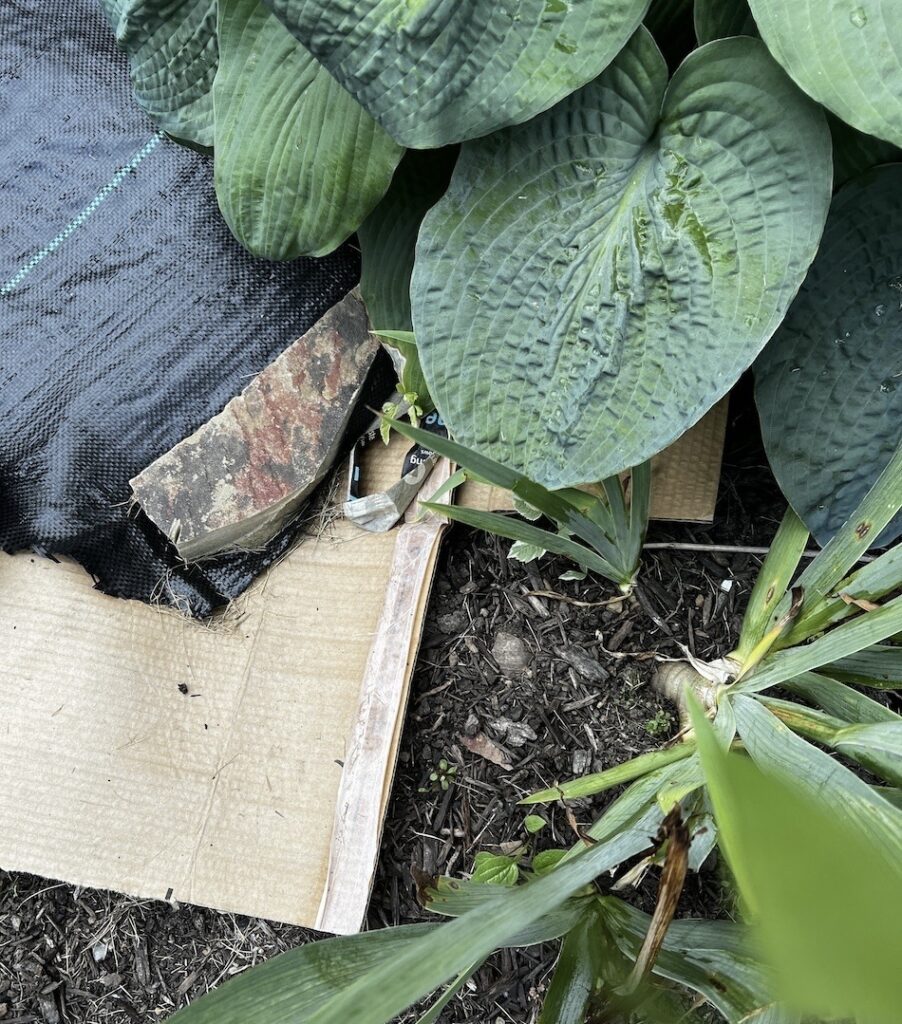
There it is!
I am in for the long haul. As the notes in everyone’s write-up on the evil weed indicated- It is highly invasive and almost impossible to eradicate. Please do not buy this plant. If you do have it and are pulling it out or digging it out, please place the plant in plastic bags so the root bits do not get into the ground again.
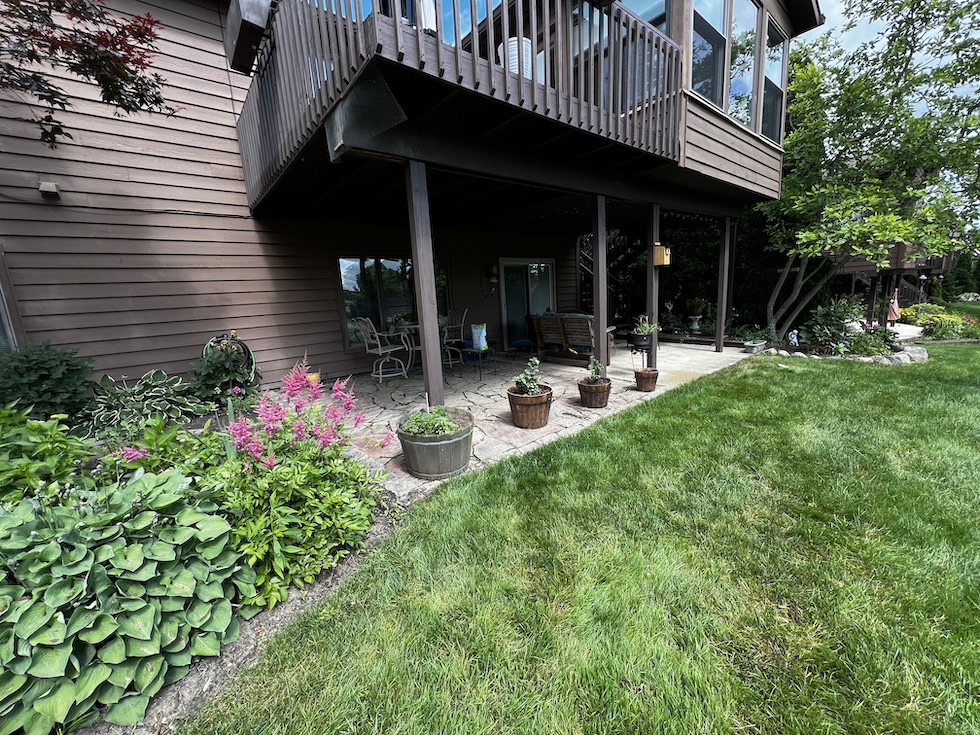
So, I shall try to protect my oasis as best I can and keep an eye out for that nasty weed. Next week, I’ll tell you what I learned about a dwarf lilac bush I planted five years ago.






